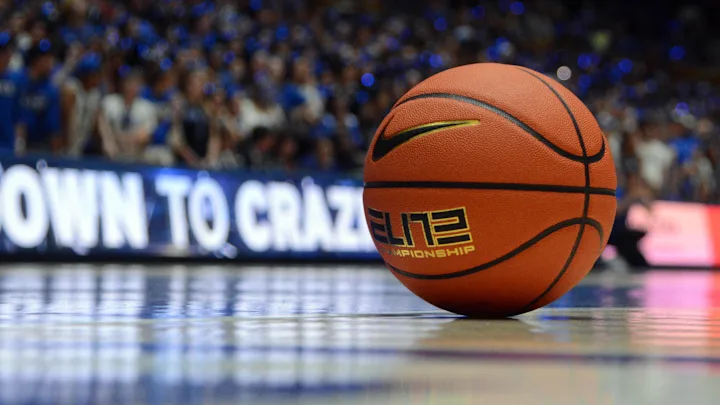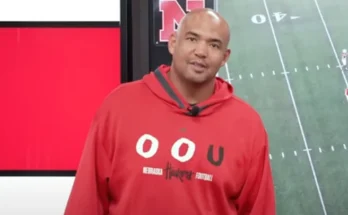Two Compelling Options Notre Dame Should Consider to Replace USC on Future Football Schedules for Maximum Impact
For decades, the Notre Dame vs. USC rivalry stood as one of college football’s most iconic and anticipated matchups. It wasn’t just a game; it was a storied tradition filled with history, passion, and national significance. However, with the recent changes in conference alignments and scheduling dynamics, the annual Notre Dame-USC game has become less frequent, leaving a significant void in Notre Dame’s future football schedules. With the Trojans potentially off the calendar for the foreseeable future, Notre Dame is faced with an important question: who should replace USC as a marquee opponent on their football schedule? The right choice could preserve the program’s national appeal, maintain competitive rigor, and excite the fan base. This article explores two strong ideas for teams Notre Dame should consider to fill the USC-shaped hole in their future football schedules.
First, any replacement opponent must offer a combination of competitive challenge, national relevance, and geographic or historic significance to Notre Dame’s program. These elements are key to maintaining the prestige of the schedule and the excitement surrounding the matchup. The two ideas discussed here, while different in approach, aim to satisfy these criteria in their own unique ways.
The first idea is to pursue a regular series with the University of Texas Longhorns. Texas football is steeped in tradition, boasts a massive fan base, and consistently competes at a high level. The Longhorns also carry immense national relevance as a flagship program in the Big 12 and now as a future member of the Southeastern Conference. By scheduling Texas regularly, Notre Dame can cultivate a fresh rivalry that generates the kind of hype and high stakes fans crave. Unlike the USC series, which often represented a cross-country rivalry, Texas provides a great geographical balance. The Midwest and Southwest are regions rich in football talent and passionate fan communities, so this pairing would create a compelling narrative and a potential recruiting boon for both schools. Additionally, Texas’ rich history and recent resurgence make it a program that can consistently challenge Notre Dame on the field.
The appeal of Texas is also logistical and commercial. A home-and-home series between Notre Dame and Texas would likely generate significant television ratings and revenue due to the massive national followings of both programs. It would also create a marquee late-season game to anchor the schedule and ensure Notre Dame faces a top-tier opponent annually. This is critical in an era where strength of schedule is closely scrutinized by playoff committees. The Texas game could easily become Notre Dame’s “new USC,” a must-watch contest that draws national attention and excites alumni, boosters, and casual fans alike.
Of course, building a rivalry with Texas would take time and mutual commitment. Both programs would have to prioritize this matchup and possibly navigate conflicts with other scheduling commitments. But the potential payoff in terms of competition, recruiting, and national relevance is significant enough to justify the effort.
The second idea centers on creating a compelling new rivalry closer to home with the University of Michigan Wolverines. Notre Dame and Michigan already share a rich football history, including numerous memorable games and intense competitive battles over the years. The geographic proximity between South Bend and Ann Arbor fuels natural fan interest and regional pride. Bringing Michigan into the Notre Dame schedule as a permanent fixture—perhaps as a home-and-home series—would energize the fan bases on both sides and bring renewed attention to a historic Midwest rivalry.
This approach taps into the deep football tradition of the Big Ten conference and would be a more familiar regional rivalry compared to a West Coast opponent like USC. The Michigan vs. Notre Dame matchup offers strong competitive balance, as both programs have enjoyed national success and have loyal, passionate fans. Their games are often played in front of packed stadiums with electric atmospheres that capture the essence of college football.
By reinstating Michigan as a regular opponent, Notre Dame would also reinforce its commitment to traditional football values and historic rivalries. The Midwestern connection resonates strongly with Notre Dame’s identity as a national Catholic university located in the heartland of American football. This pairing also opens doors for further collaboration between the programs and their fan communities, including joint events, shared alumni initiatives, and enhanced recruiting pipelines in the region.
From a competitive standpoint, Michigan offers Notre Dame a top-tier challenge every year. The Wolverines’ sustained success under recent coaching regimes has kept them among college football’s elite, ensuring that games would have significant playoff and bowl implications. This creates a compelling narrative for the season and helps maintain Notre Dame’s national visibility, particularly in a landscape where the playoff committee values strength of schedule and quality wins.
While the Michigan option emphasizes tradition and regional rivalry, it also aligns well with modern college football’s evolving dynamics. Both programs benefit from stability, shared values, and intense competition. This consistency could foster one of the sport’s premier rivalries for years to come.
Between these two ideas — Texas and Michigan — Notre Dame faces a choice between continuing the tradition of a storied rivalry rooted in regional pride or establishing a new high-profile matchup with a program that matches the national appeal of USC. Each has its merits and challenges.
Texas offers the allure of a new cross-country rivalry that taps into the vast talent pools and fan bases of the Southwest and Midwest. It’s a fresh opportunity to build a marquee game that can rival USC’s national significance. However, it would require careful planning and collaboration to fit into both schools’ schedules, particularly as Texas transitions into the SEC with its own demanding slate of conference games.
Michigan, on the other hand, offers a revival of a long-standing rivalry with immediate fan appeal, regional significance, and competitive balance. It’s a natural fit geographically and culturally, making it easier to sustain annually. However, since Notre Dame already schedules Big Ten teams like Michigan State and Northwestern periodically, the addition of Michigan as a constant opponent would require reshuffling existing scheduling priorities.
Ultimately, Notre Dame’s choice will hinge on what the program values most in the years ahead: creating a fresh marquee rivalry with broad national reach or reestablishing a classic, regionally meaningful rivalry with immediate fan excitement. Either option could effectively replace USC’s role on Notre Dame’s schedule, maintaining the program’s elite status and competitive challenge.
Beyond Texas and Michigan, Notre Dame also has other potential options, such as Stanford, Penn State, or even Oklahoma, but these two schools stand out due to their blend of tradition, competitive strength, and fan enthusiasm. Texas and Michigan both bring unique elements that can keep Notre Dame’s schedule compelling in a rapidly evolving college football landscape.
Scheduling a new permanent opponent is not merely about filling a vacant date on the calendar; it’s about shaping the identity and future narrative of Notre Dame football. The right opponent can boost recruiting, energize fans, generate revenue, and ensure national relevance. It can create defining moments and memorable games that resonate beyond a single season.
In conclusion, Notre Dame’s future without USC on the schedule will undoubtedly require strategic thinking and bold decisions. Whether the Fighting Irish opt to build a fresh rivalry with Texas or reignite an old one with Michigan, the program has a chance to craft a new chapter in college football history. Both options offer exciting potential to create marquee matchups that deliver competitive drama, national attention, and sustained fan passion. As college football continues to evolve with conference realignments and playoff expansions, Notre Dame must carefully choose opponents who match its tradition of excellence and help define its future. Texas and Michigan represent two of the best opportunities to fill that void and ensure Notre Dame football’s future schedules remain among the nation’s most eagerly anticipated.



